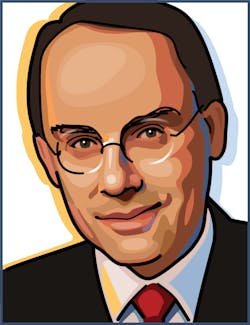
Well-known partners endeavor new horizons
Developing quantum technologies for real world applications is a complex endeavor and so the new building will host a highly interdisciplinary team of 100 to 120 people. The employees will be recruited from the existing HiTec groups, as well as scientists from future third party funding.
For this center the Leibnitz University Hannover partnered with institutions such as the Laserzentrum Hannover LZH and the Max Planck Institute for Gravitational Physics (Albert Einstein Institute). While the latter was the place where the first gravitational wave was recognized, it was at LZH where the famous LIGO lasers have been developed.
Another important partner of HiTec will be the Physikalisch-Technische Bundesanstalt (PTB), the German equivalent of the U.S. National Institute of Standards and Technology (NIST). The PTB’s president Joachim Hermann Ullrich said about his ambitions at HiTec: “Beside the verification and certification of quantum technologies we want to establish quantum standards in the long run.” On the occasion of the HiTec inauguration Ulrich was awarded the honorary doctorate of the Leibnitz University Hannover.
The whole project was born out of the university’s Cluster of Excellence QUEST (Center for Quantum Engineering and Space-Time Research) and involves physics as well as geodesy and engineering faculty.
Big tools for big science
Beside the unique blend of experts there will be some new tools that make this place very special. Most eye-catching is certainly the Einstein Elevator. This is a 40-m-high drop-tower, where zero gravity can be created for approximately 4 seconds. Apart from an improved accuracy concerning microgravity (< 10-6 g) and a load of 1000 kg, it is the repetition rate of up to 100 tests per 8 hour shift that makes this tool outstanding.The experiment chamber with a diameter of 1.7 m and a height of 2 m will host a number of different experiments. For example, 3D printing in space is on the wish list. The gravity is tunable from almost zero to 5 g, which allows for tests for Moon and Mars missions as well.
A second big instrument is a four story (15 m) high atomic fountain. This Very Large Baseline Atom Interferometer (VLBAI) is a platform for experiments on atomic interferometric inertial sensor technology in the field of geodesy and fundamental physical research. Essentially, this is a drop-tower for atoms. Here it becomes obvious why the laser labs in this house have outstanding vibration isolation and a temperature stabilization of 1k in the house and 0.1 K on the table.
And there is one more tower: The last but not least big instrument is a fiber drawing facility. It comes with a full preform lab and lots of diagnostics.
News from LZH
One of the founding partners of HiTec is the Laserzentrum Hannover LZH. With about 10,000 m² and 188 employees it is focused on applied laser research with a balance between laser physics and engineering or production tasks. LZH has strong partners for production technology in the area and hence, a long record for new laser-based solutions for manufacturing.
LZH departments are separated into optical components and systems, optical production technologies, and biomedical photonics. The latter field has already led to the foundation of the biomedical research center NIFE (German acronym for Lower Saxony Centre for Biomedical Engineering, Implant Research and Development).
The former LZH department head Detlev Ristau is already overseeing the new fiber drawing facility at HiTec. He will stay on the Scientific Board of LZH, which will certainly help to nurture the close cooperation of LZH and HiTec in future. This will be particularly important for LZH’s business areas of space technology and additive manufacturing technology, whereas medical technology will be fostered with other partners.
Future prospects
The funding for QUEST ended last year, but several applications for a new Cluster of Excellence have been filed. A decision at the German funding agency DFG is expected by September 29. The research at HiTec will focus on the challenging topic of “Spaceship Earth”, as institute founder Wolgang Ertmer put it. He seeks the establish facts in crucial fields like climate studies and geotectonics using new quantum sensing technologies.
Related: Lasers may safely defuse World War II bombs, a recent article describing a project for bomb defusing by senior editor John Wallace
Related: Project shows laser joining of steel-aluminum mixed connections, a recent article by David Belforte on a welding technology project by LZH
Related: Novel Detectors: Squeezed-light gravity wave detector handles high power with low noisean article from 2016 where Senior Editor Gail Overton explains how at the Hannover based project (and HiTec partner) GEO 600 the breakthrough technology for LIGO was developed.

Andreas Thoss | Contributing Editor, Germany
Andreas Thoss is the Managing Director of THOSS Media (Berlin) and has many years of experience in photonics-related research, publishing, marketing, and public relations. He worked with John Wiley & Sons until 2010, when he founded THOSS Media. In 2012, he founded the scientific journal Advanced Optical Technologies. His university research focused on ultrashort and ultra-intense laser pulses, and he holds several patents.

